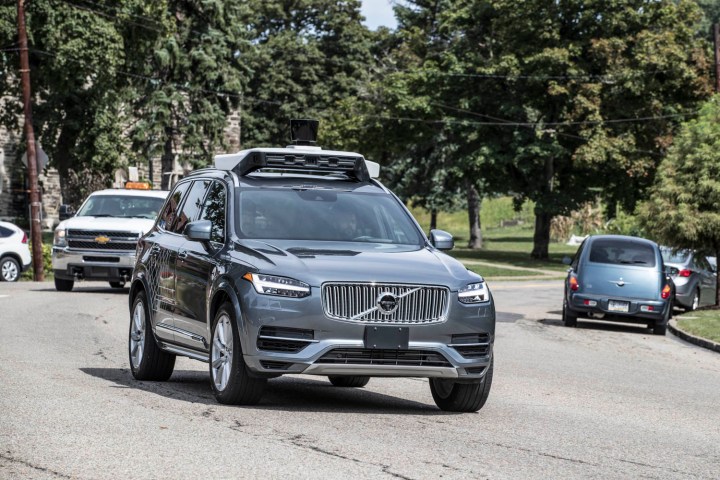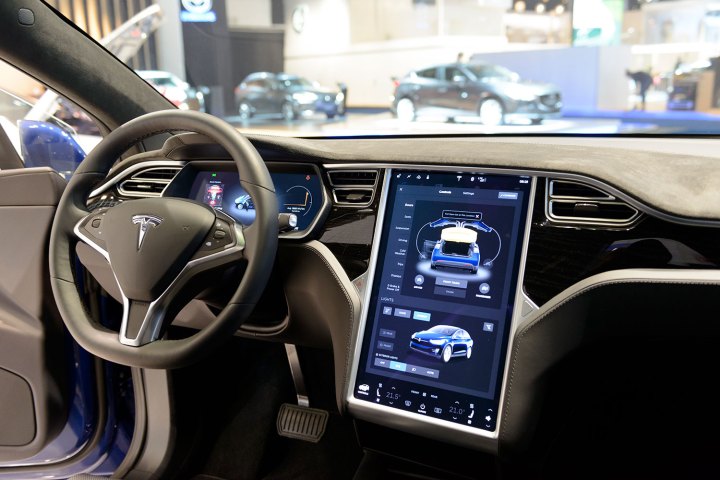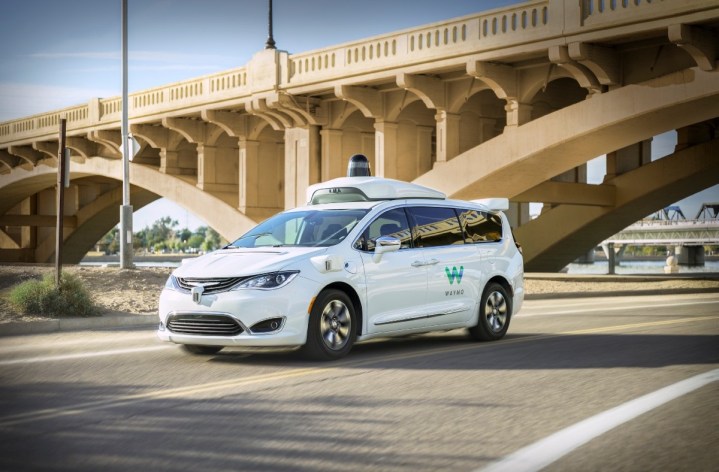Autonomous vehicle technology has seen billions in investment, spectacular advancements, and tragic reminders of how far we still have to go. Not since 3D printing has a technology been so lauded, so predicted to imminently change our everyday lives, and so deeply misunderstood.
Currently there are no companies that are able to offer a fully autonomous ride in any conditions, on any road, with no human overseer. Letting you kick back and watch Rick and Morty while your iCar 6 Plus does the driving is the ultimate goal, but what seems to have escaped most coverage of autonomous vehicles (AV) is how far we are from that ultimate goal.
Currently, you can see a bifurcation of the AV industry into two camps: Those companies who are introducing very limited technologies for public consumption (sophisticated cruise control systems), and those who have debuted almost entirely autonomous technology but under very constrained circumstances (shuttles on college campuses).
Before diving into who is doing what, and how far along they are, let’s breakdown the different levels of autonomous vehicles:
Levels





The current state of autonomous driving
The leaders in autonomous driving have achieved Level 4 technology, but only along pre-defined routes under specific circumstances (daytime, good weather). These companies are offering campus shuttles or employee buses only, and always with human safety drivers on board. These safety drivers also seem to always be wearing jaunty polo shirts for some reason. Self-driving cars the public can actually buy and use themselves are still firmly at Level 3 technology, with Cadillac’s Super Cruise system the widely-recognized leader. This system works on pre-mapped highways, but Super Cruise is the only hands-free system available to the general population.
The technology at work
Every autonomous driving system is built on a whole suite of software and an array of sensors. Machine learning, lidar projectors, radar, and ultrasonic sensors all work together to create a living map of the world that a self-driving car can navigate. Most companies in the race to full autonomy are relying on the same basic technological foundations of lidar + radar + cameras + ultrasonic, with a few notable exceptions.
Currently there are no companies that are able to offer a fully autonomous ride in any conditions, on any road, with no human overseer.
Tesla and Nissan have loudly declared its opposition to lidar, and instead rely solely on cameras and ultrasonic sensors to give their cars a view of the world. This is in direct opposition of every other major player in the AV space, who are all relying on lidar to form a multi-layered safety net with cameras and ultrasonic. We asked Edwin Olson, CEO of Level 4-achieving May Mobility for his thoughts on this. “Using LIDARs as part of a multi-modal sensor suite is the only credible path to building safe and reliable systems” he said. Meanwhile, Nissan General Manager Tetsuya Iijima said, “At the moment, lidar lacks the capabilities to exceed the capabilities of the latest technology in radar and camera.”
Technology that is not in dispute is machine learning and AI. Most companies have constructed a simulation environment – a virtual city as it were – to run their cars through and quickly test rare scenarios or hardware tweaks. Think of it as Tron meets calculus homework. Any company who has built such a simulation has invariably run many more “miles” inside the virtual world than in the real one. What enables these simulations to be so valuable is incredibly detailed mapping of intersections, routes, and even whole cities.

Every company continuously captures the images and scans their vehicles record, and that data is shared within their respective fleet and into the virtual city that has been created. This allows for all the cars in a company’s fleet to know when construction on an intersection starts, or about a particularly cyclist-prone neighborhood. This kind of distributed learning system is why Tesla’s Autopilot has been able to leapfrog so many pure autonomous startups in coming to market – they simply have more vehicles on the road than any of their competitors.
One technology that is being explored by a small handful of startups is Vehicle to Everything (V2X) communication. These systems go beyond all vehicles speaking to each other, or even Cadillacs speaking to Hondas. Instead, this technology enables traffic lights to talk to cars, who in turn talk to other cars, who in turn talk to weather services. These systems would be incredibly dynamic and could prevent many accidents and traffic jams. Unfortunately, it would also make every infrastructure project, traffic light, and new car more expensive. Until these sensors and communication devices cost pennies, V2X technology is unlikely to be adopted outside of special zones or forward-thinking cities.
The major players
Uber

Uber’s autonomous division, the Advanced Technology Group (ATG) holds the sad distinction of being responsible for the first pedestrian death by a self-driving car. In March of 2018, a combination of technical problems and human error led to the company’s autonomous Volvo running into a woman as she crossed the street. ATG responsibly pulled all their test vehicles off public roads immediately and began investigating, trying to determine how to prevent such an occurrence.
Uber believes their existing infrastructure gives them a competitive advantage in rapidly scaling autonomous vehicles.
In December of 2018 the company re-launched a handful of cars in three cities. We spoke to the Uber team and they laid out for Digital Trends how they have relaunched their test vehicles. All their cars now have two human minders — called “Mission Specialists” — riding inside each AV to watch over everything. In Toronto and San Francisco, the Specialists are doing manual data collection. This involves a human driving around the two cities and letting the suite of sensors collect data and map the urban environments. Meanwhile, in Pittsburg the vehicles are driving themselves, with two technicians on board as overseers, only in perfect conditions. These include only during good weather, in a limited geography, and only between sunrise and sunset.
The company flatly told Digital Trends that their ultimate goal is only Level 4 autonomy. In other words, they expect a human to always be available and capable of rescuing the AI. This is a stunning admission from a company who has spent billions chasing the autonomous dream, and shows just how difficult (impossible?) Level 5 will be. Uber believes their already existing infrastructure gives them a competitive advantage in rapidly scaling autonomous vehicles once the Level 4 technology is ready for the public. They have a good point there.
Tesla

Available on all three models that Tesla offers, the Autopilot system is the most publicly used Level 3 system in the world. This puts the buying public at the forefront of the technology, but also makes them guinea pigs. Tesla’s AV tech is actually a suite of separate functions for individual circumstances and speeds, leading many in the public to improperly assume that Tesla’s can drive themselves – sometimes to fatal results. In fact, Consumer Reports found the system to be “far less competent than a human driver” when completing simple tasks like lane changes.
The Autopilot system is capable of simultaneous cruise control, lane keeping, distance keeping, and lane changes. Quite separately, the software is also capable of automatic steering along low-speed roads (called Autosteer+) and also of driving a few feet toward you when you summon it (Enhanced Summon). The Tesla system is not capable of automatically cruising on a freeway, then exiting the freeway and driving you along a low speed road. While able to do all three functions separately, the transitions between these activities still requires a human driver, and indeed the driver’s hands are required on the steering wheel at all times.
Cadillac

With the leading Level 3 technology publicly available, Cadillac’s Super Cruise system is the only hands-free driving technology available to the public right now. Built off of 5cm-accuracy lidar maps of 130,000 miles of freeways, Super Cruise is capable of taking you from coast to coast without touching the wheel — aside from gasoline, bathroom, and nacho breaks of course.
What Cadillac’s system lacks compared to Tesla’s smattering of different functions it makes up for by being more capable on the freeway and being completely handsfree. Rather than trying to do everything at once, Super Cruise is extremely capable at its one job — autonomous highway driving. Also an industry first, the Cadillac system depends on a camera monitoring the driver to ensure that they are watching road. If the system sees that the driver is distracted, an audible alert chimes and the system begins a countdown to disengagement.
Cruise

The winner for the most money collected in AVs has to go to Cruise, with $7.2 billion and counting. That level of investment has bought them more than 1,000 employees, offices in four cities, and the only fleet of 180 all-electric autonomous test cars. The majority of their testing fleet lives in San Francisco, and for almost two years the company has offered their employees in the Bay Area an AV ride-hailing service. They currently do not offer any rides to the public. This is a good thing as a June 2019 report showed that Cruise vehicles are 5% to 11% as safe as a human driver.
Cruise was acquired by General Motors in March of 2016 but continues to operate somewhat independently. In fact, they have partnerships with both GM as well as Honda to develop purpose-built autonomous vehicles to be developed and deployed at scale. Cruise has also started working with DoorDash to pair self-driving cars with food delivery. So while they are not currently serving the public, they have the infrastructure and the partnerships in place to scale rapidly once they have Level 4 automation or above.
Waymo and other shuttles

With the only autonomous service currently offering Level 4 autonomous vehicle rides to the general public, Waymo would appear to be leading the autonomous race. Unfortunately, these self-driving taxis are only available in Phoenix, AZ and to a group of 1,000 carefully-selected test riders. While these minivans have logged more than 10 million miles on public roads (and seven billion miles in simulation), the company has been careful to keep the parameters of their tests very limited. Obviously, Phoenix is a city renowned for its clear and sunny weather. They are also only operating in pre-defined areas that are constantly mapped. We reached out to Waymo for this story and they refused to comment on their future plans. What we do know is that they are proceeding about as slowly as the average septuagenarian driver that populates the Phoenix area already.
This shuttle-type approach is being taken by several firms (including May Mobility, Optimus Ride, and Fisker among a plethora of others) and represents the clearest and most-feasible path for Level 4 and even Level 5 automation that will actually impact our day to day lives. To emphasize the focus on actually transporting paying customers now, May Mobility’s CEO Edwin Olson says, “We learn by doing. Every ride that we provide today produces data that helps us roll out AV services in new places.” By restricting the variables (sticking to known routes and steady speeds) and obsessively mapping the route to allow for all-weather driving, these companies are able to offer the world a peak at what full Level 5 automation will be like if we are ever able to bring it to every car and road in the country.
Trucking

While automation is helpful and even somewhat fun for the public, for the trucking industry it means a complete sea-change in the way business is done. It also offers the possibility of a massive competitive advantage for those fleets that can afford a whole fleet of autonomous semis. As with so many industries, labor is a major cost center for trucking companies. Eliminate that cost, and shipping gets cheaper. Products on the grocery shelves get cheaper, too. As for all those truckers, however, they’ll need to find new work. All 3.5 million of them. Truck driving is the most common job in 29 of the 50 United States. Not to mention the additional 5.2 million people employed in the trucking industry generally, or the untold millions who support it (gas station attendants, roadside restaurant servers, truck washers, etc). Legislative action and lawsuits should be expected as the status quo pushes back against self-driving trucks.
We must confine our expectations around autonomous cars to relieving the most monotonous and unpleasant driving scenarios.
Autonomous truck companies such as Xos Trucks and Embark are undeterred by this potential legal quagmire, however, and are pushing forward with tests and limited live routes. Think of these routes as mimicking your last plane ride: The pilot (driver) takes care of getting you off the ground (in this case out of the warehouse and onto the freeway), then hands the plane off to the autopilot once the hard part was over and you are in the sky (on the freeway). When you arrive at your destination, the pilot re-takes control and lands the plane (Pulls into the store or warehouse). Having the human driver take over for the first and last mile and letting the computer handle the monotonous long stretch in between is a natural fit. And a great role for what humans are best at (complicated, unpredictable environments) and letting the AI handle the more rote tasks.
Currently the leader in autonomous trucking is TuSimple with 51 trucks live on the road ferrying actual paid cargo (and your mail!) to and from loading docks in the southern U.S., but it is a crowded space with many closely-matched competitors. Look for consolidation and acquisitions inside the next 2 years.
The Future
The likelihood that we will ever see Level 5 automation in every condition and on every road is vanishingly small. We’re more likely to see a technological leap that obviates personal cars before we see Level 5. We could have bred horses for so long that they evolved to run 500 miles a day, survive on an apple and a cup of water per day, and kneeled down when we get on or off them. Instead, we invented cars. We are likely to experience, and even enjoy, Level 4 and Level 5 automation within strict confines like shuttles and deliveries. Fairly soon even.
We must confine our expectations around autonomous cars to relieving the most monotonous and unpleasant driving scenarios, rather than driving for us all the time. The airline industry has been tackling this problem for decades, and your last plane still had at least two pilots up front. We’ll be driving our cars for some time to come, but soon we will be able to read all those mean tweets safely while in traffic. And that is the future I’m fighting for.



